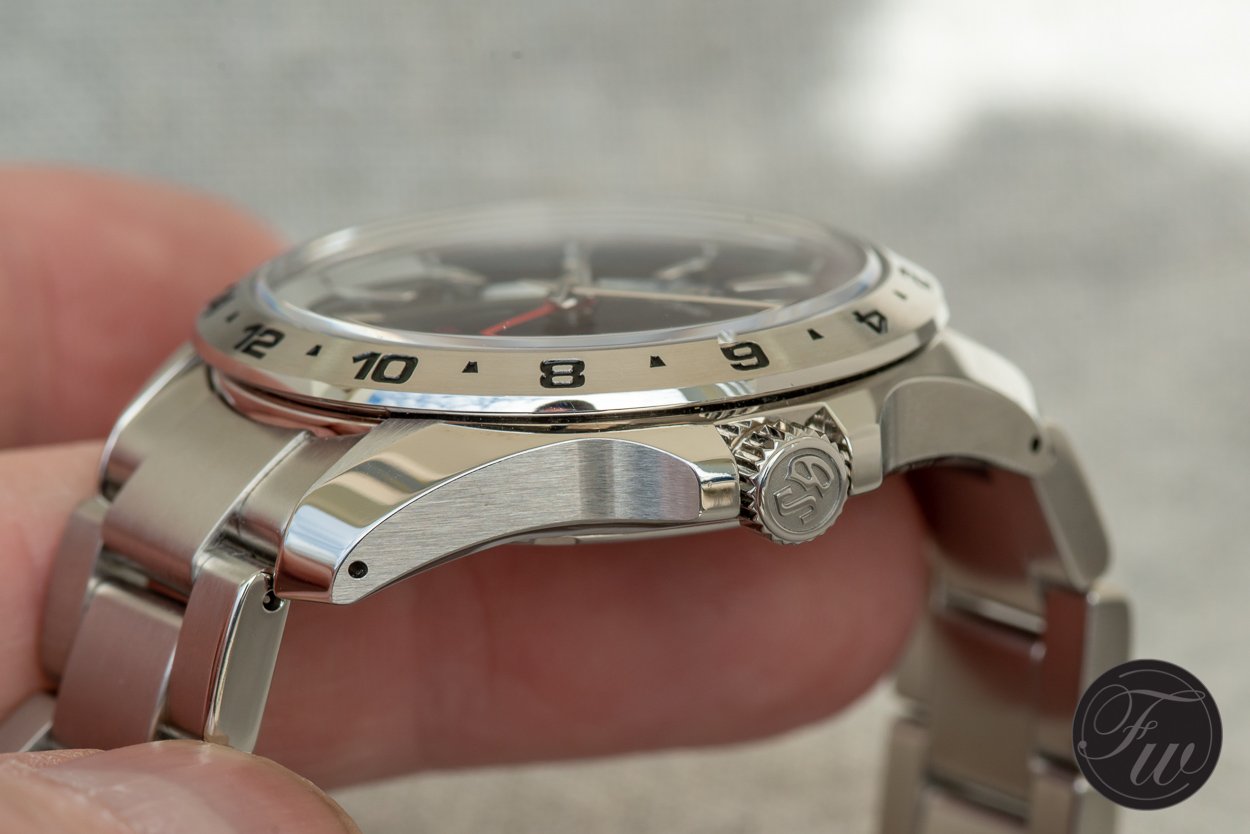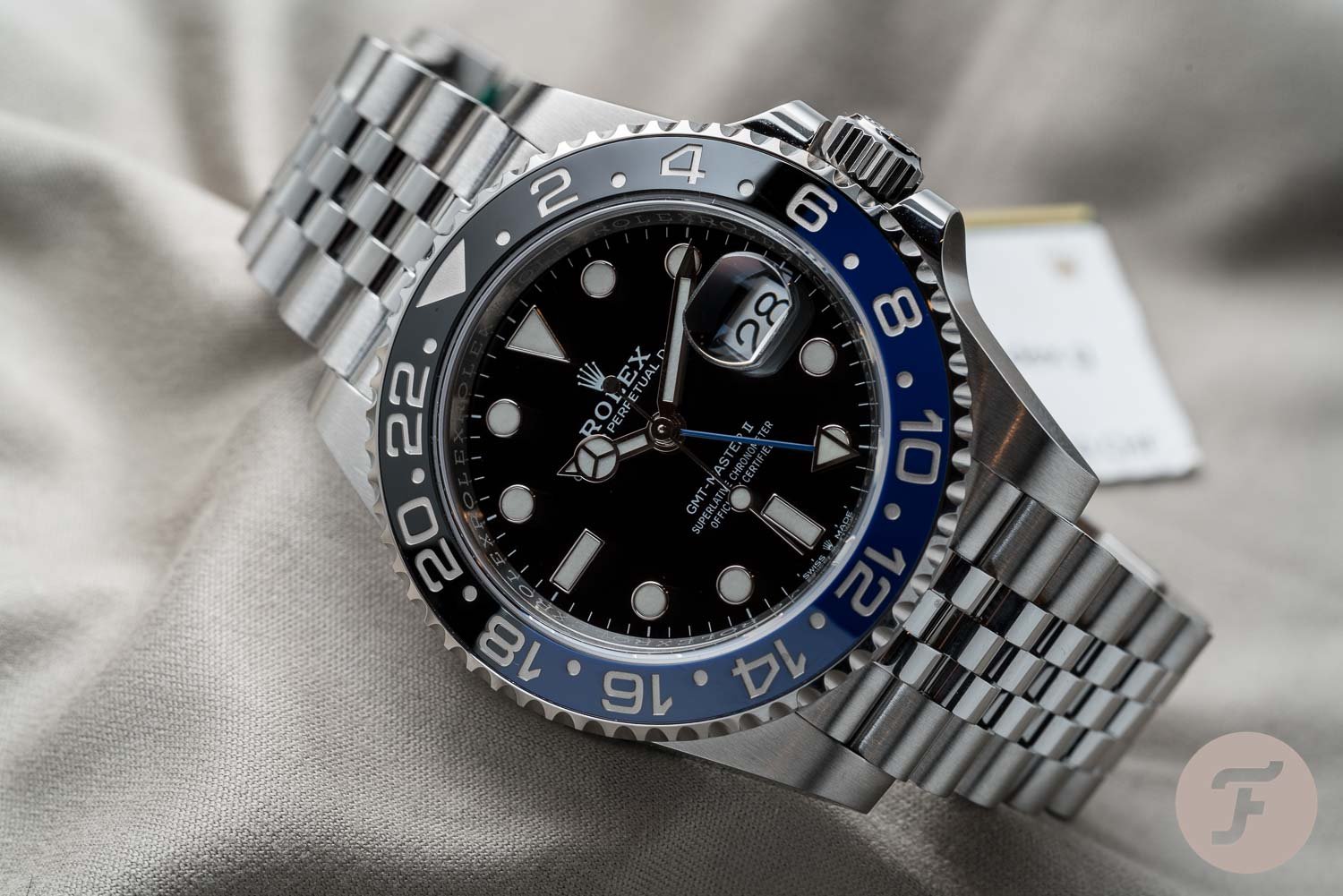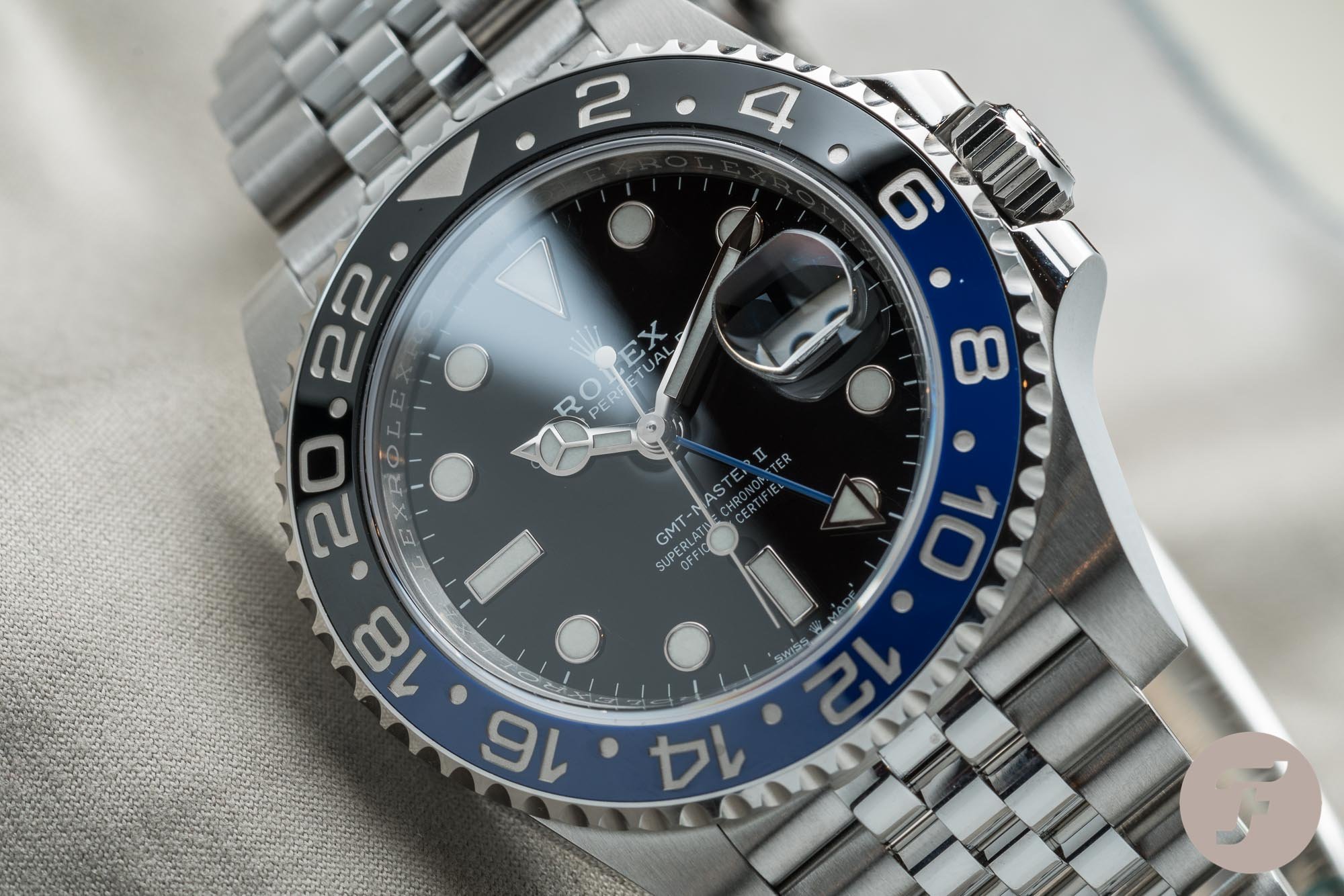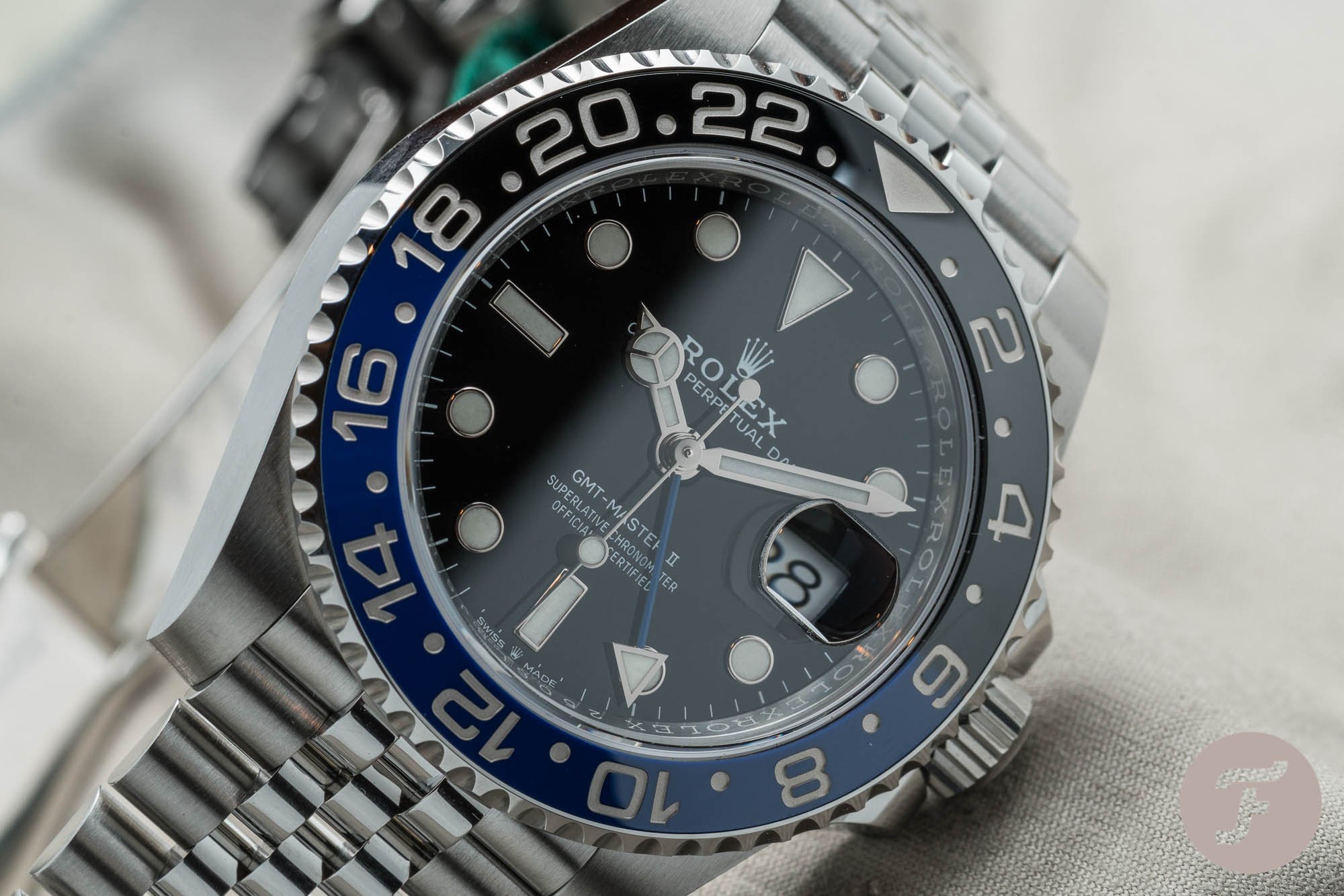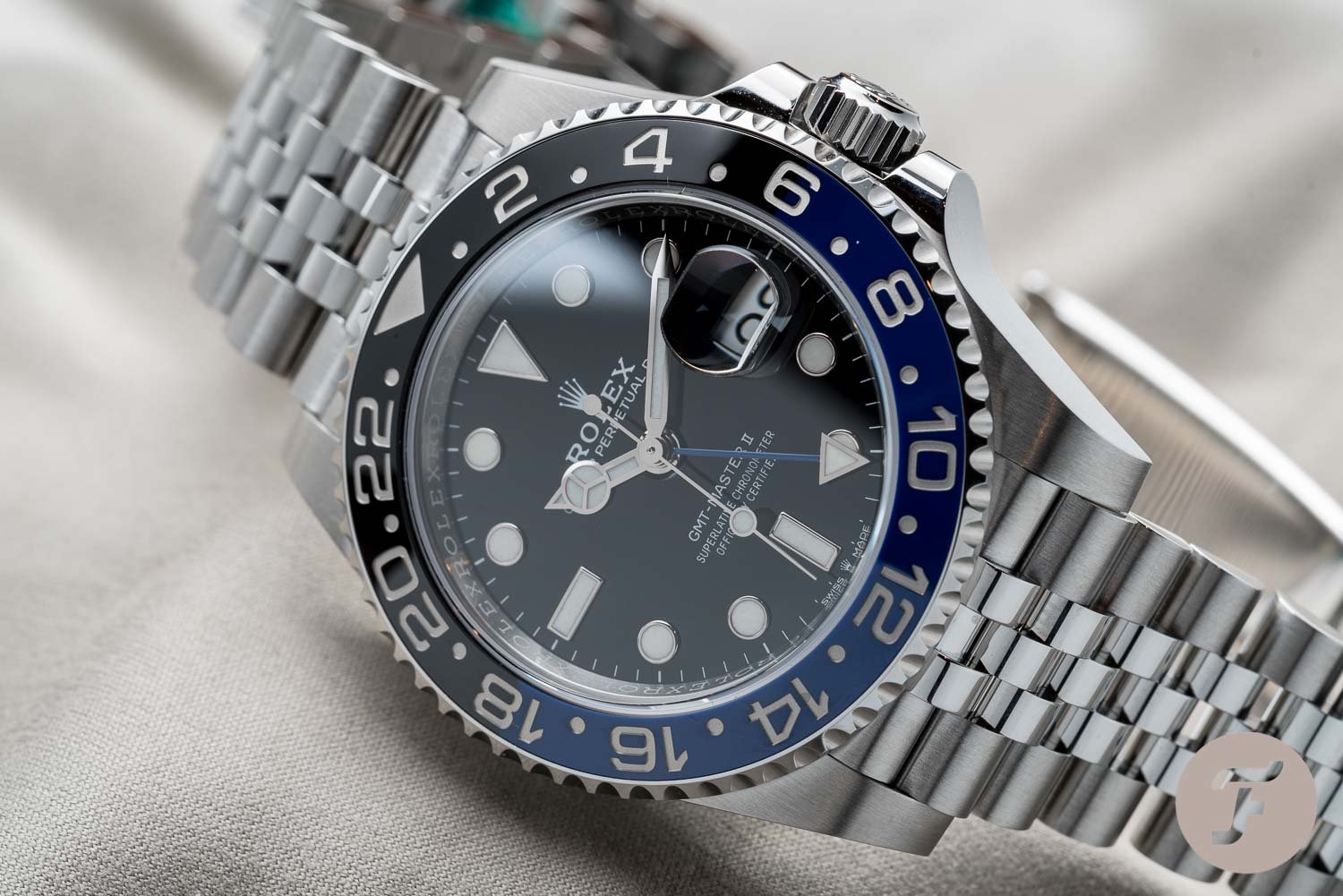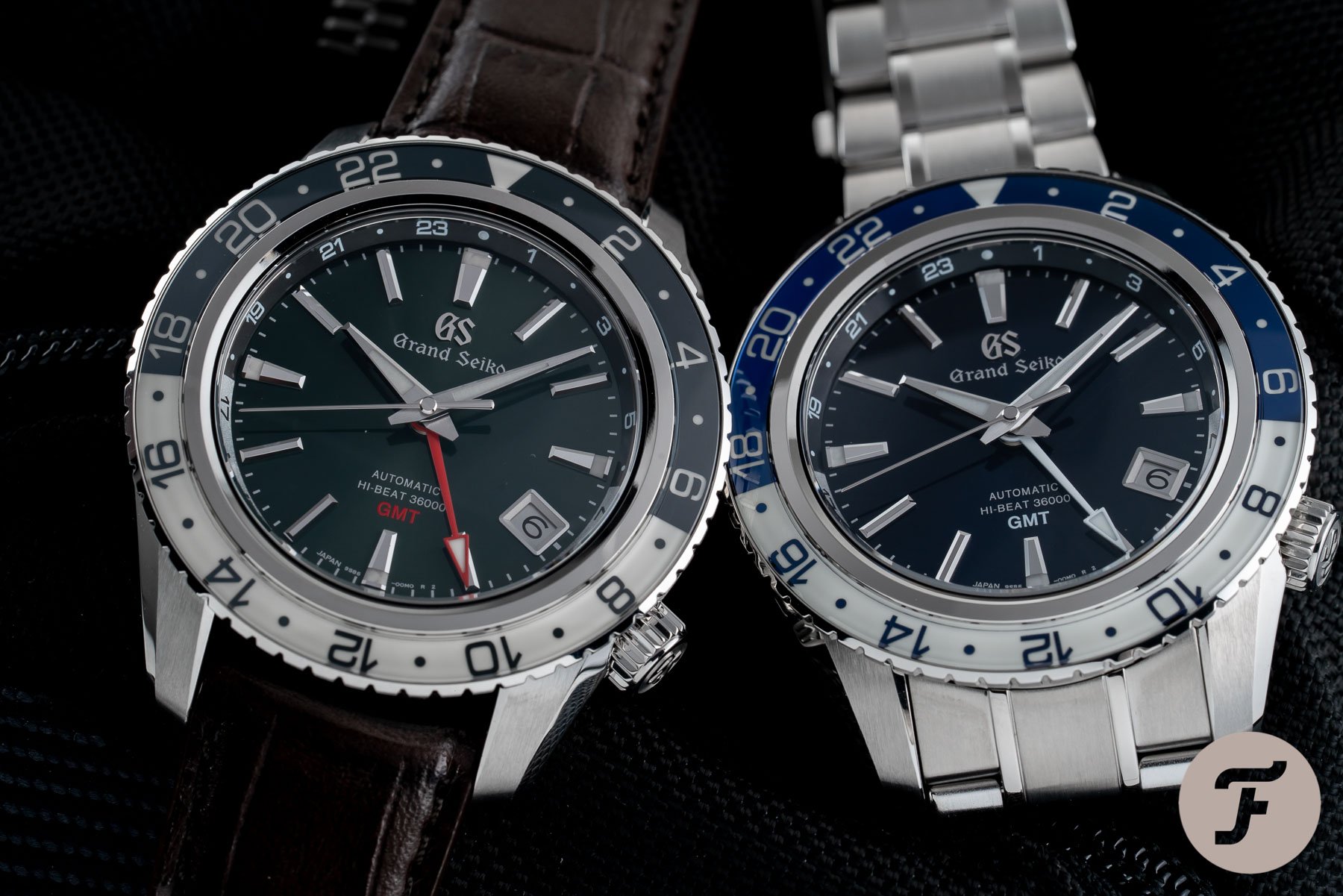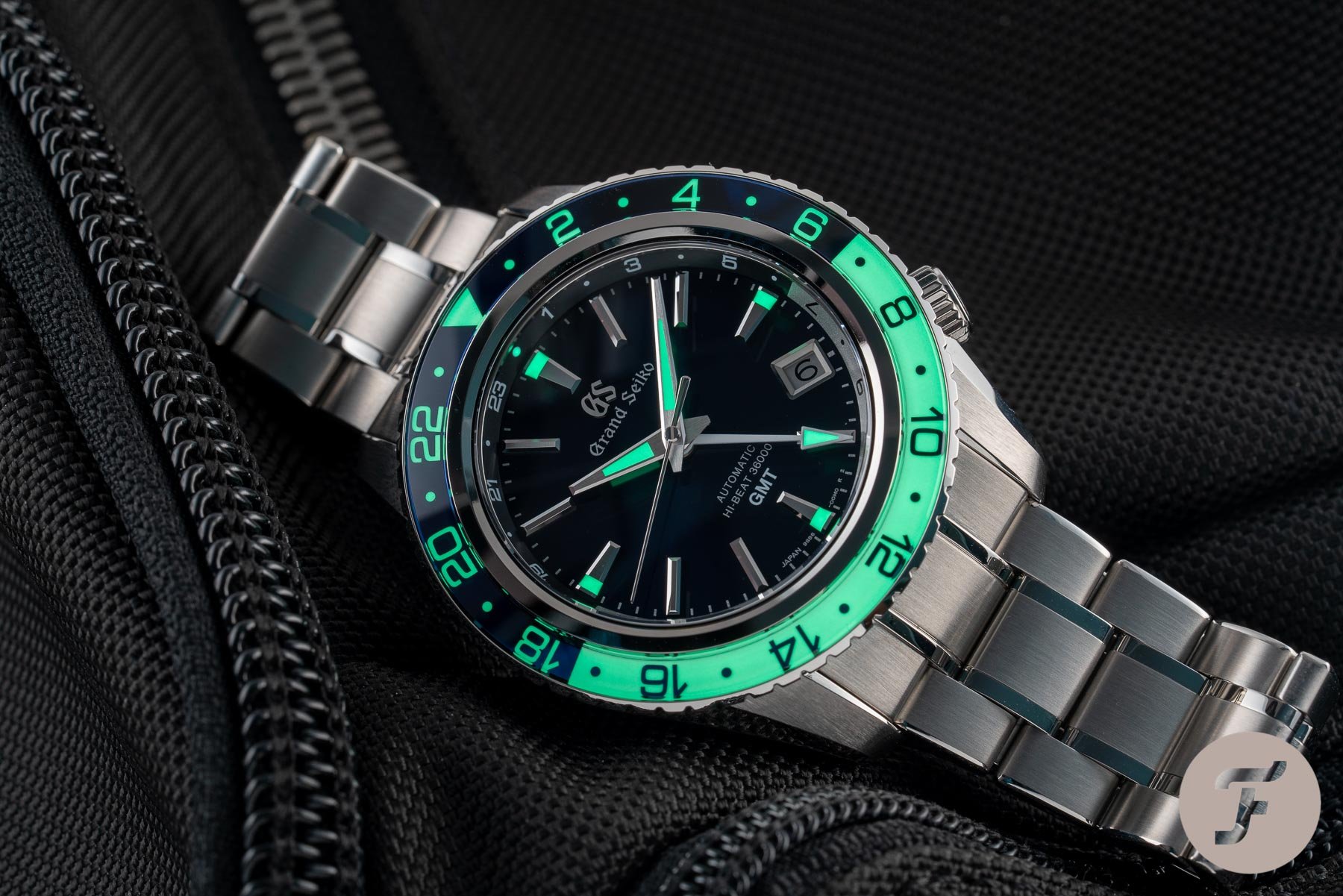Sunday Morning Showdown: GMT Wars Part Deux — Rolex Vs. Grand Seiko
In our Sunday Morning Showdown, two of our writers go head-to-head in an epic showdown for the ages. Strong opinions and hysterical hyperbole are welcome (so feel free to join in with the fun in the comments section below). And don’t forget to let us know which watches you’d like to see torn to shreds/effusively exalted next week. We’ll try and feature as many of our readers’ choices as we can. Today’s showdown continues some unfinished business. In part two of our GMT Wars saga, the Grand Seiko SBGJ237 aims to finish the fight against the Rolex GMT-Master II “Batman”.
Cast your mind back to May last year. Benny and Bobby faced off in Part One of the fabled GMT Wars. At the time, Rob won with the Rolex Explorer II over the Grand Seiko SBGN005. To the victor go the spoils — with only a slim margin of 72 votes and a ratio of 51% to 49% in favor of the Rolex. Ben was always left aggrieved in this declaration of Rob as the winner. Primarily, as the quartz ticker had a mammoth task of taking on the industry equivalent of a mechanical megalodon. With the year rolling on, and the voting staying open, the odds have shifted. While the Explorer II remains the title-holder as decreed in the subsequent Showdown, the results now suggest the Grand Seiko has some purchase with the readership.
Unfinished business
If you check the voting now, the SBGN005 is ahead with a few more votes while the ratio is still stuck on 50-50. Not enough for the Grand Seiko to claim the championship, but just the encouragement Ben needs to settle the score. Curiously, this time Ben is backing the Coronet, whereas Jorg swoops in to fight for the hind-legged lion.
Firstly, let’s sweep the teeth from last week’s bout. Despite his reservations, we now crown Jorg as the second writer to win three consecutive rounds of Sunday Morning Showdown (although he still has a way to go to catch Rob’s all-time record of eight weeks on the bounce…). The distinctiveness of the Ploprof was rewarded for its brave design and badass attitude of being true to itself. It’s a “go big or go home” situation as it turns out. The Grand Seiko SBGH257 tests the waters of peculiarity, while the Ploprof dives crown first to the tune of 52%.
Jorg may be busy spraying the sweet champagne of fortune, but Ben is plotting his fiery comeback. To support his endeavor, Ben has summoned the undefeatable Rolex GMT-Master II 126710BLNR. Otherwise known as the “Batman”, who doesn’t exactly shy away from a fight. Thinking quick on his heels, while wiping the champagne from lips, Jorg brings in the Grand Seiko SBGJ237 to battle. The game is afoot to prove once and for all which watch can be deemed the GMT “master”.
Ben — Rolex GMT-Master II Ref. 126710BLNR
Before I crack on, let’s just remind ourselves of the function of a GMT watch. Essentially, you can track an additional timezone in tandem with home time. Dual-timing is the core feature of the GMT, which stands for Greenwich Mean Time. The name is a slight misnomer, but in the context of watch complications, GMT is often the standard nomenclature.
On the Rolex GMT-Master, the central hand with arrow tip is set to GMT and circulates in 24-hours. Traditionally, pilots adjust for the destination time by shifting the bezel bi-directionally — either forwards or backwards, depending on the location. The bezel now indicates the new local time in correspondence with the position of the GMT hand against the bezel. This keeps the departure timezone with the hours and minutes always in check.
Mastering the GMT
With the movement advancements from the GMT-Master to the GMT-Master II in 1982, the central hour hand can now be set independently from the GMT hand. The GMT hand locks in place while the Mercedes hand jumps in hour increments. Possibly making the rotating bezel redundant. However, the added adjustability gives the ability to track up to three timezones at once. On the GMT-Master II “Batman”, I would adjust the white gold Mercedes hand to indicate local time. This is a personal preference, as I would deem the time in my current location to be the most relevant. And as the central hours and minutes are the most efficient way to tell time, I would want to maintain this legibility. Wouldn’t want to miss my dinner plans after all.
The GMT-Master II can now track three timezones at once.
I would then keep track of GMT with the bezel unmoved and midnight displayed above 12 o’clock. However, with the bezel remaining as a rotatable element, I could then use the same position of the blue GMT hand, but shift the scale to another timezone. The GMT hand now lines up to bezel numerals of the third timezone, with the relative position on the dial to keep tabs on the GMT. The only problem is, you lose the day/night indication by not being able to track GMT with the bezel at a tilt. So for me, dual-timing is still what the GMT-Master does best, and has been doing since it was dreamed up by Pan Am pilots and Rolex in 1954.
Fightin’ til I’m black and blue
In 2019, the black and blue bezel (BLNR) GMT-Master II got the update treatment its Pepsi-Cola color brother saw the previous year. By that, the “Batman” model was given the new and improved Caliber 3285 movement and slimmer lug and case design. Caliber 3285 got a boost in power reserve to 70-hours from the 48-hours in the Oyster “Batman” model, making it consistent with the rest of the GMT-Master II range. Accompanying the caliber is a COSC and Rolex Superlative certification, with a precision rating tolerance between +2/-2 seconds deviation under normal circumstances. This is all fascinating, but let’s be honest, the main pull of the GMT-Master II has to be bold color combinations on the Cerachrom bezel.
The “Batman” nickname stems from the Caped Crusader’s comic strip costume.
Cerachrom, or the ceramic used for the bezel insert, began life at Rolex on the GMT-Master II, but only in the all black reference 116710LN from 2007. It wasn’t until 2013, that the two-tone Cerachrom bezel came to light with the black and blue BLNR. The “Batman” nickname stems from the Caped Crusader’s comic strip costume. On the underside of Batman’s cape is blue with the outer surface as black as the night he dwells in.
Jorg: I’d rather have a Pepsi while watching the caped crusader catch some bad guys on my tv-screen honestly.
The nickname spread immediately, but “Bruiser” was another name thrown around during the GMT’s introduction in 2013. One nickname had to stay, and I’m glad “Batman” stuck the landing.
Material science
Black and blue was the perfect choice to showcase the bi-color ceramic bezel. A mandate was set by Rolex that the entire bezel insert had to be a single piece. For the process, blue is laid down first on the full circumference of the bezel. Black is then coated on the pm half, superseding any color beneath. Not so easy with the red and blue “Pepsi” version, whose colors are similar in lightness. To get the balance right, blue and red flakes are placed on either side and baked in different temperatures on each half. This leads to a little bit of red on the blue side and vice versa. For this reason the blue side has a more purple hue when compared to the aluminium bezels of previous generation “Pepsi” GMT-Masters.
Only the Oysersteel (904L) GMT-Master IIs have the ref. 69200 Jubilee bracelet.
The “Batman” doesn’t face this problem, leading to a blue color that’s as bright and bold as it wants to be. This punchy look carries over to the latest version, which also adds the ref. 69200 Jubilee bracelet. It’s now standard that the precious metal or bi-color GMT references have the sporty Osyter bracelet. And only the Oysersteel (904L) GMTs have the Jubilee. That’s quite the dichotomy, as a flashy bracelet surely pairs better with precious metal. In any case, the “Batman” is a robust daily watch that is never out of place on anyone’s wrist and in any profession — all for €9,200.
Jorg, honestly, how can you top that?
Jorg — Grand Seiko SBGJ237 GMT
Well, this is actually a first for me Ben. In our series of Sunday Morning Showdowns, I have never advocated a Grand Seiko watch before. And it’s not that I don’t like the brand. Au contraire, I have great respect for the roaring lion, and I absolutely love what it brings to the table. You may sense a “but” coming, and here it comes. The “but” is that Grand Seiko, for me, does not have the cachet like some of the big-hitting Swiss brands.
And it’s not due to a lack of history, because there is plenty that makes for a compelling story. The King Seiko vs. Grand Seiko internal conflict; the tale of Tanaka’s “Grammar Of Design”; the iconic models from the past like the 44GS and the 61GS. Even the incredible craftsmanship and the strive for innovation. It’s all part of a rich heritage and why Grand Seiko is considered the Japanese equivalent to Omega and Rolex.
The story is that extra factor.
Yet, my biggest issue with Grand Seiko is the lack of lineage tying to a specific model. There are so many qualities that go into defining a watch’s desirability. Yet, as an emotional buyer, it’s the storytelling that is often what pushes me over the edge and guides my hand as I swipe my credit card on a new watch. Only a few models and brands can claim this level of heritage — perhaps with a tinge of fabrication. It’s a big part of why we all love the Speedmaster here at Fratello. The story is that extra factor that makes a brand attractive and a timepiece more than just a watch. It’s also why the Rolex GMT-Master II is such an icon and why I love it.
A GMT level playing field
Ben, I can hear you thinking: “Is he taking pity on me this week after three straight wins?” — no, I remain as ruthless as ever. I do love the GMT-Master II, however, a significant part of its magic only lies in the red and blue “Pepsi” version. And not in the black and blue “Batman” that Ben is peddling. To me, that was just another color. Call me a purist — and that doesn’t happen often when it comes to watches — but it’s all about the “Pepsi” when discussing the GMT-Master. If I’m taking on the “Batman”, I feel we have a level playing field with my choice of the Grand Seiko SBGJ237.
The Grand Seiko SBGJ237 and SBGJ239 were introduced just last year. From the moment these “true GMT-watches” arrived at the Fratello HQ, Robert-Jan, Gerard, Bert, and I were enraptured by these watches. Initially, it was the green SBGJ239 that stood out just as RJ mentions in his review of the SBGJ237.
That dark green dial is an absolute peach, and the red GMT-hand gives it that little extra zing. But from the moment I put the blue SBGJ237 on my wrist, I knew this is where the long-term power is. The blue and white colors look fresh and the watch comes on a bracelet, something I prefer considering this sporty style of watch.
Black and blue vs. white and blue
The 44.2mm watch comes with deep navy dial and a blue and white sapphire bezel that looks crisp and clean. You may notice it’s not an even split between the colors on the bezel.
Ben: May have noticed? It’s a blinding eyesore. Especially when the bezel misaligns with the dial’s fixed 24-hour scale that follows the color cue of the bezel.
Let me explain first! Grand Seiko decided that daytime is indicated in white between 06:30 and 17:30. A quirk? Sure, but one that is certain not to cut any numerals in half with its delineation — unlike a certain GMT-Master. On top of that, the Lumibrite-filled bezel looks absolutely stunning in darker settings.
It runs even more accurately than Grand Seiko states.
Inside the case, you will find the Grand Seiko Hi-Beat Caliber 9S86. It’s a movement that can be found in a string of other Grand Seiko watches. A tried and tested movement that operates at 36,000vph and has an accuracy between +3/-5 seconds per day on average. As you’ve said yourself, Ben, Grand Seiko does not take any chances when it comes to the speculated precision ratings. Chances are likely that it runs even more accurately than Grand Seiko states, bringing it very close to the GMT-Master IIs +2/-2 seconds.
Fact sheet arguments
Some further quirks in comparison to the Rolex are the date indication and crown that line up at 4 o’clock. The crown at that position is a Seiko regular, and while some people dislike it, I don’t mind it at all. It saves you the use of guards as well as a crown poking into your hand. On top of that, Grand Seiko steps up its game when it comes to the steel bracelet. The brand nails it with the SBGJ237’s flowing lines and chamfered edges on the bracelet, making it a joy to wear.
The watch as a whole is truly remarkable.
This brings me to the last part of my argument, its real-life presence. Because I have seen the reaction to this watch, and I’m sure you will have these reservations as well Ben. I can hear many say “Oh the case is too big”, “the crown position is wrong”, “the bezel is weird”. All these individual touches taken out of context may seem like it would form an oddball design. But up close and on the wrist, the watch as a whole is truly remarkable.
Final take
Jorg: Just by taking fellow editor Mike’s experience, you begin to understand the power of the SBGJ237. As Mike found out, the watch wears significantly smaller than the 44.2mm might have you believe. It even made the cut on his best of 2020 list, despite Mike’s preference for smaller watches. And it wasn’t just the size that was surprising: Mike also took note that the SBGJ237 is a major step up in finishing quality in comparison to the GMT-Master II “Batman”. Add the Hi-Beat movement and the €7,000 list price, and this is a much better value proposition than the “Batman” — by a mile to be honest. I’m going to save you the argument of availability, which I know will be a prominent discussion amongst the readers below.
Ben: I’m definitely not here to defend the practises of Rolex ADs. I find it quite freeing NOT being in a long list of budding watch buyers, myself. I will admit that this Grand Seiko takes real strides in the right direction for an everyday GMT watch. However, the holdovers that GS is unwilling to relinquish just stops it short of breaking through the mainstream barrier. The date window position, the size, and the odd color split. All things you were anticipating in my arguments. So the SBGJ237 is getting ever closer but just not enough to knock the GMT-Master II “Batman” off its plinth.
But what do our readers think? Vote now and share your thoughts in the comments below.

